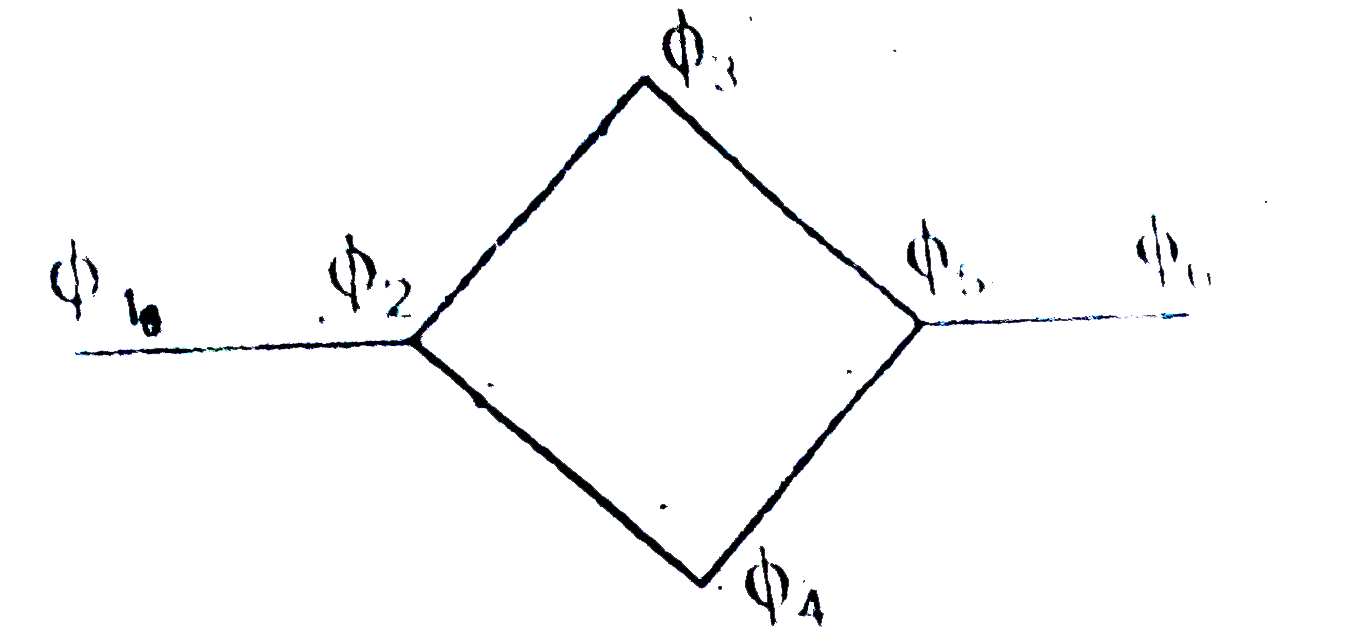Two identical rods are connected between two containers. One of them is at 100∘C containing water and another is at 0∘C containing ice. If rods are connected in parallel then the rate of melting of ice is q1g/s . If they are connected in series then teh rate is q2g/s . The ratio q2/q1 is
The correct Answer is:4
Temperature differenceThermal resistance=L(dmdt)
dmdt∝1Thermal resistance,q∝1R
The rods are in parallel in the first case and they are in series in the second case q1q2=2R(R/2)=4 .
Topper's Solved these Questions
- BOOK - NARAYNACHAPTER - TRANSMISSION OF HEATEXERCISE - LEVEL-I(H.W)19videos
TRANSMISSION OF HEAT
- BOOK - NARAYNACHAPTER - TRANSMISSION OF HEATEXERCISE - LEVEL-II(C.W)27videos
TRANSMISSION OF HEAT
- BOOK - NARAYNACHAPTER - TRANSMISSION OF HEATEXERCISE - SINGLE ANSWER QUESTIONS Passage -11videos
TRANSMISSION OF HEAT
- BOOK - NARAYNACHAPTER - THERMODYNAMICSEXERCISE - Exercise187videos
THERMODYNAMICS
- BOOK - NARAYNACHAPTER - UNITS AND MEASUREMENTSEXERCISE - STATEMENT TYPE QUESTION23videos
UNITS AND MEASUREMENTS
Similar Questions
Two identical conducting rods are first connected independently to two vessels, one containing water at 100∘C and the other containing ice at 0∘C. In the second case, the rods are joined end to end and connected to the same vessels. Let q1andq2 gram per second be the rate of melting of ice in the two cases respectively. The ratio q1q2 is
(a) 12 (b)21 (c)41 (d)14View SolutionSix identical conducting rods are connected as shown in figure. In steady state temperature of point ϕ1 is fixed at 100∘C and temperature of ϕ6 at −80∘C

Q. What is the temperature of ϕ2?View Solution
Knowledge Check
- Question 1 - Select One
Two identical rods are connected between two containers on of tehm is at 100∘C and another is at 0∘C. If rods are connected in parralel them the rate of melting of ice is q1gm/sec.
If they are connected in series then the rate is q2. The ratio q2/q1 isA2B4C1/2D1/4 - Question 2 - Select One
Two identical rods are connected in parallel. One end of the rods is maintained at 100∘C and other end is kept in 0∘C ice . The rate at which the ice melts is Q1 gm/sec . Now the rods are connected in series . The ends are again maintained at 100∘C and kept in 0∘C ice . Now the rate at which ice melts is Q2 gm/sec . Then Q2/Q1 is
A4B1/2C2D1/4 - Question 3 - Select One
Three identical condensers are connected together in four different ways. First all of them are connected in series and the equivalent capacity is C1. Next all of them are connected in parallel and the equivalent capacity is C2. Next two of them are connected in series and the third one connected in parallel to the combination and the equivalent capacity is C3. Next two of them are connected in parallel and the third one connected in series with the combination and the equivalent capacity is C4. Which of the following is correct ascending order of yhe equivalent capacities ?
AC1<C3<C4<C2BC1<C4<C3<C2CC2<C3<C4<C1DC2<C4<C3<C1
Six identical conducting rods are connected as shown in figure. In steady state temperature of point ϕ1 is fixed at 100∘C and temperature of ϕ6 at −80∘C

Q. What is the temperature of ϕ3?View SolutionTwo identical conducting rods are first connected independently to two vessels, one containing water at 100∘C and the other containing ice at 0∘C. In the second case, the rods are joined end to end connected to the same vessels. Let m1andm2 g/s be the rate of melting of ice in the two cases respectively, the ratio m1m2 is
View SolutionThe effective capacitance of two capacitors of capacitances C1 and C2(C2>C1) connected in parallel is 256 times the effective capacitance when they are connected in series. The ratio C2C1 is
View SolutionThe effective capacitance of two capacitors of capacitances C1 and C2(C2>C1) connected in parallel is 256 times the effective capacitance when they are connected in series. The ratio C2C1 is
View SolutionTwo identical capacitors are connected in series with a source of constant voltage V. If Q is the charge on one of the capacitors, the capacitance of each capacitor is :
View Solution

